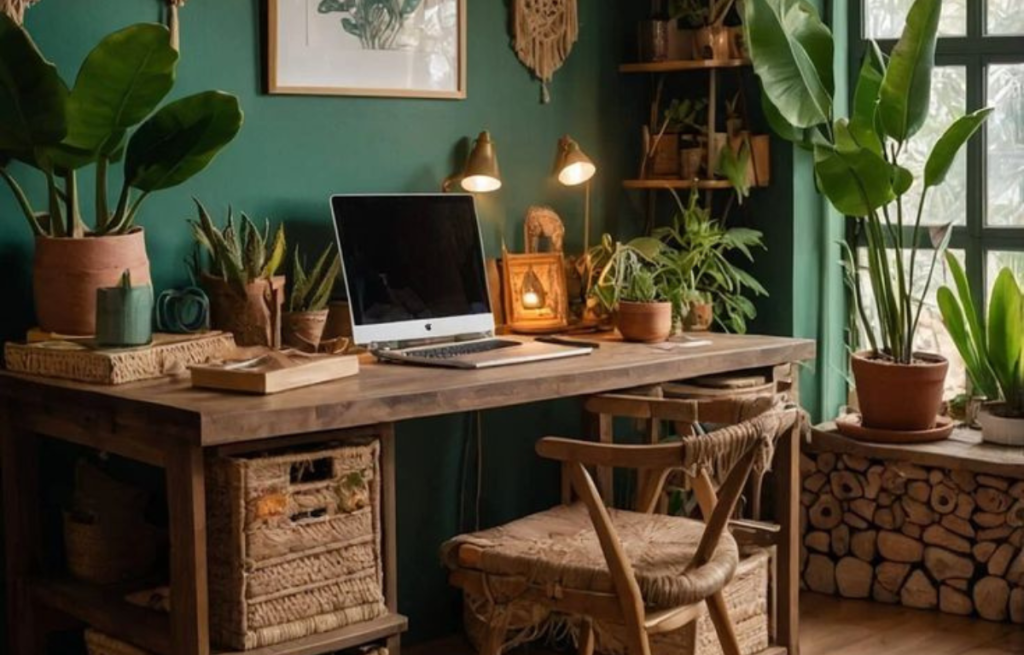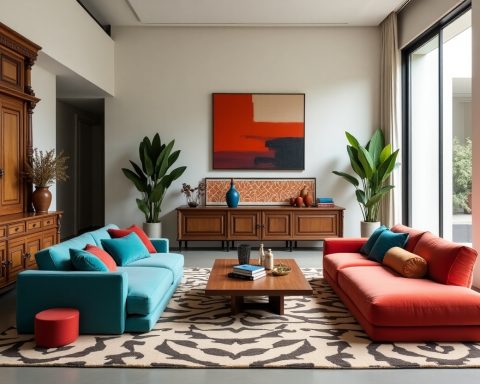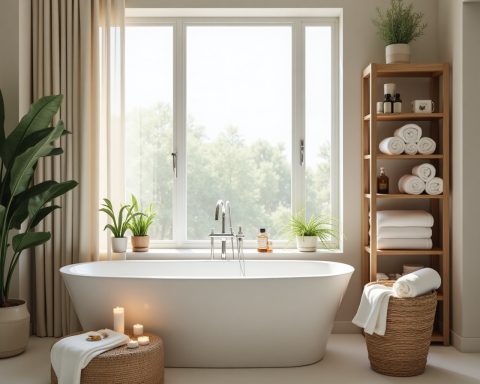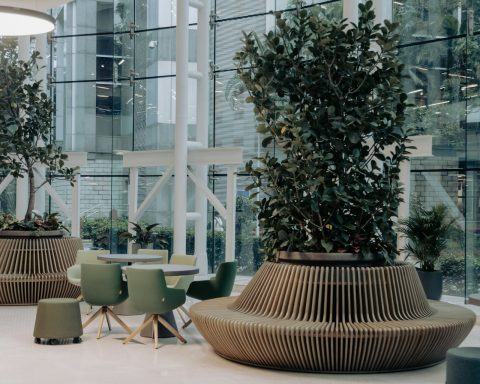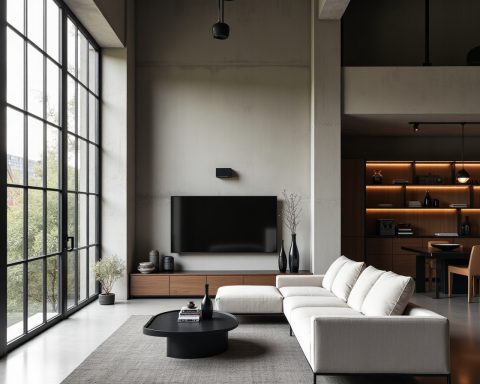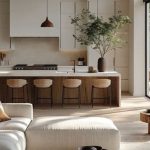Corners are often the most overlooked yet potent areas in any space. These dead zones hold untapped potential to elevate a room from ordinary to extraordinary. With thoughtful planning and a keen understanding of environmental psychology, corners can be transformed into functional, aesthetic, and emotionally uplifting areas. This article explores the psychology of corners and offers strategic solutions to activate and enliven dead spaces in both residential and commercial interiors.
Understanding the Psychological Impact of Corners
Humans instinctively respond to spatial arrangements. Empty corners often feel incomplete or awkward because they disrupt visual and emotional balance in a room. The brain seeks symmetry, continuity, and purpose in spaces. When a corner is left unused, it can subconsciously generate feelings of discomfort, emptiness, or underutilization.
In contrast, well-designed corners provide closure to the room’s layout, offering psychological satisfaction. This sense of wholeness makes spaces feel more harmonious, inviting, and livable.
Why Corners Matter in Interior Design
- Spatial Efficiency: Corners occupy precious square footage. Ignoring them results in wasted space.
- Visual Balance: An activated corner completes a room’s aesthetic symmetry.
- Mood Enhancement: Smart corner designs can induce calmness, focus, or even joy, depending on their purpose.
By transforming corners, we don’t just fill space—we infuse personality and function into the environment.
Top Creative Ideas to Revive Dead Corners
1. Create a Cozy Reading Nook
One of the most popular ways to transform a dead corner is by turning it into a personal sanctuary. A plush armchair, soft throw, side table, and a standing lamp can instantly convert an unused space into a peaceful reading corner. Add wall-mounted shelves for books and decorative touches for warmth.
Psychological Benefit: Encourages mindfulness and relaxation—great for mental wellness.
2. Install Floating Shelves for Vertical Storage
When floor space is limited, use verticality. Floating shelves or corner wall units maximize storage without cluttering. Display curated collections, indoor plants, framed memories, or minimalistic décor elements to make the corner a focal point.
Psychological Benefit: Appeals to the brain’s love for organization and hierarchy.
3. Introduce Nature with Indoor Plants
Corners are perfect spots for adding greenery. Tall indoor plants like fiddle-leaf figs, snake plants, or bamboo palms introduce organic life and texture to an otherwise hard geometric space. For smaller corners, hanging planters or cascading vines work beautifully.
Psychological Benefit: Improves mood, reduces stress, and enhances indoor air quality.
4. Design a Mini Home Office or Study Corner
Dead corners can serve as compact workspaces. A wall-mounted desk or narrow table with ergonomic seating can turn a forgotten space into a productive hub. Add lighting and sound-absorbing panels to enhance comfort and focus.
Psychological Benefit: Promotes productivity, especially in open-plan or small homes.
5. Use Mirrors to Expand and Brighten
Mirrors are powerful visual tools. When placed in corners, they reflect light, expand space, and amplify movement. This design trick can make small or dark rooms feel larger and more dynamic.
Psychological Benefit: Enhances energy flow and boosts mood through increased natural light.
6. Set Up a Meditation or Wellness Spot
Corners are naturally secluded and intimate, making them ideal for personal rituals. Add floor cushions, incense, candles, and a low table to create a tranquil meditation area or a mini altar for mindfulness practices.
Psychological Benefit: Facilitates mental clarity, inner peace, and spiritual grounding.
7. Add Art Installations or Sculptures
A strategically placed artwork or sculptural piece can make a corner a statement zone. Whether it’s a bold painting, hanging mobile, or textured sculpture, it provides visual interest and can become a conversation starter.
Psychological Benefit: Stimulates creativity and adds cultural dimension to your environment.
8. Design a Pet Corner
Pet owners can dedicate dead spaces to their furry companions. Cozy pet beds, toy baskets, feeding stations, or cat climbing walls create utility and charm for both humans and animals.
Psychological Benefit: Enhances emotional bonding with pets and makes the home more inclusive.
9. Build Corner Cabinets or Banquettes
Custom-built corner cabinets or banquette seating maximize storage and improve traffic flow. They can seamlessly blend with the architecture and serve dual functions such as dining, lounging, or organizing.
Psychological Benefit: Reduces clutter, enhancing peace of mind and aesthetic satisfaction.
10. Light Up the Corner
Lighting is one of the easiest ways to bring a dead corner to life. A floor lamp, pendant light, or even fairy lights can add warmth, depth, and emotion to the space. Smart lighting can even change hues based on mood.
Psychological Benefit: Proper lighting balances circadian rhythms and impacts emotional well-being.
Design Principles to Keep in Mind
Embrace the “Third Point” Rule
In triangular or L-shaped layouts, the corner becomes the third visual point. Use this to your advantage by placing an object or design feature that draws the eye in a circular or triangular flow.
Maintain Consistency in Style
Even if the corner serves a unique function, it should visually align with the overall aesthetic of the room. Use complementary colors, materials, and textures to ensure a seamless transition.
Balance Function with Form
Every design should be both beautiful and practical. Avoid overcrowding or over-decorating the corner. Let the space breathe while still serving a defined purpose.
Psychological Strategies for Corner Activatio
- Color Psychology: Use warm tones like amber, terracotta, or sage green to invite calmness.
- Sensory Cues: Incorporate textures, scents, or soft music to create multi-sensory richness.
- Zoning: Visually separate the corner with rugs, screens, or architectural details to define its purpose and identity.
Conclusion: Every Corner Has a Story
The corners of our spaces are untapped narratives waiting to be written. Through intentional design and psychological insight, we can breathe life into dead zones, enriching not just our environments but our everyday experiences. Whether through light, texture, greenery, or purposeful furniture, activating a corner is not just a design choice—it’s a holistic lifestyle upgrade.

